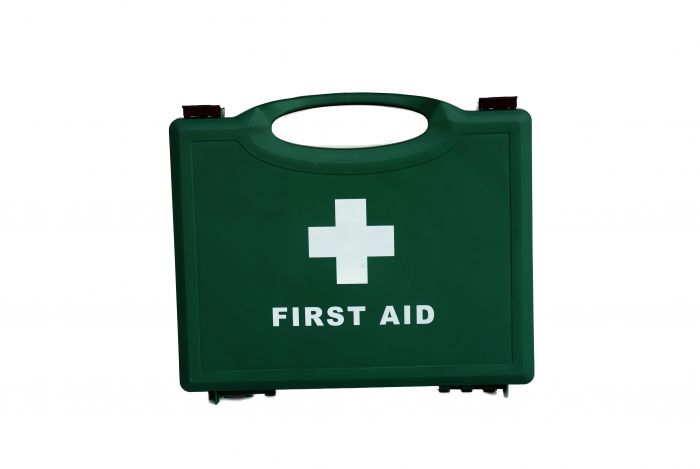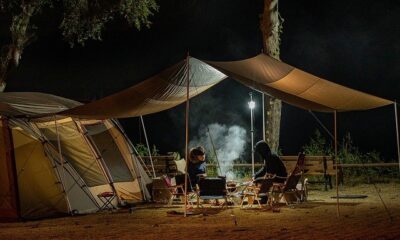Business
13 Must Haves in Your First Aid Kit and Why?

Accidents don’t come with prior notice. And also, being prepared is always advisable. A first aid kit keeps you prepared for treating minor cuts and burns. It helps you to manage more serious injuries too, like broken bones and even heart attacks, until emergency responders arrive for your help. How? With the help of medical essentials. And for that you need to stay prepared with all those medications and equipment required to help you in emergencies. Don’t worry, I have a checklist of ‘must-haves’ for your emergency box. So, what are you waiting for, start gathering your medical essentials and mark them checked.
Where Should One Keep First Aid Kits?
First aid kits are for minor to major emergencies; thus it is wise to keep a kit somewhere easily accessible. Keep one of it at your home in a central location, of course, stored out of your children’s reach. Also, make sure that babysitters and caregivers know the location of where it is placed. And keep the second kit in your car in case an accident occurs.
Additionally, it is recommended to carry an emergency kit while travelling and at your work desk too. Depending on the contents, the flight restrictions might require storing it in the checked luggage bag when flying.
13 Must-haves in Your First Aid Kit and Why?
1. Gauze
You can use sterile gauze to apply pressure to minor open wounds to stop the bleeding. You can also apply it to minor burns, that is, after you cool the burn under cool (not cold) water. With a larger sterile gauze bandage, you can apply pressure on longer or deeper wounds to control moderate bleeding. A trauma pad is best for controlling deep or penetrating wounds that cause severe bleeding.
2. Scissors
Scissors have multiple uses. You can use it to cut the desired size of gauze, tapes, and cut away the clothing to expose injuries while the treatment process is going on.
3. Tape
The latex-free, hypoallergenic tape is useful to secure gauze wound dressings in its place.
4. Wound Cleanser
Soap and water cleaning is the best option to clean the cuts once they have stopped bleeding. But that is not always available or prescribable. In similar situations, adding a wound cleanser spray or antiseptic wound wipes to clean scrapes can help in the best way.
5. Bandages
Once your wound is cleaned thoroughly, you can move with bandaging it. A pack of sterile bandages can help your wound to heal.
6. Hot and Cold Packs
You might know about cold packs and hot packs; I am assuming many of you might even have one. Cold packs are helpful in relieving pain from sprains, strains, and muscle aches. You can keep a reusable hot and cold pack in your freezer for instant pain relief at home. And in case of more chronic pains, you can simply heat the packs in the microwave. You can add an instant cold pack to your travel medical kit. It is ready to use and doesn’t require a freezer.
7. Elastic Bandage
An elastic bandage is an excellent addition to your emergency kit. You can use the elastic bandage to wrap sprains for providing support and compression to your wounds. It heals in the RICE protocol order (rest, ice, compression, elevation).
8. Hand Sanitizer
After giving any medical treatment, you need to wash your hands properly with soap and water for at least 20 seconds. But if the soap and water facility is unavailable, then you can use a hand sanitizer to cleanse your hands. And as soon as soap and water are available, don’t skip washing your hands with it, even if you have already used hand sanitizer.
9. CPR Mask
CPR breathing barriers such as face shields and masks protect you from contacting any other person’s saliva or bodily fluids while you give rescue breaths. A face shield is a more basic and portable option while a CPR mask is a little larger in size and creates a tight seal over the person’s nose and mouth.
10. Medications
You should include some common medications in your emergency kit. Aspirin is a must-have in that medicine list as it is a life-saver remedy for an adult with chest pain. In case someone is having a severe chest pain, then you should immediately call 911 and then give them a regular aspirin to chew. Make sure they are not allergic to blood thinners, or previously told not to take aspirin by a doctor. One should never give aspirin to a child. Because it can cause a serious condition in them called Reye’s syndrome.
11. Bug Spray
Insect repellent is useful in preventing itchy mosquito bites and tick bites. It also helps to protect you from the diseases that insects carry.
12. Eye Wash
Eyewash helps in relieving eye irritation, itching, stinging or discomfort, by flushing out all the irritants like chlorine, smoke, pollen, dust, and more.
13. First Aid Manual
A manual is a very essential component of every first aid kit. It provides you instructions on what to do or use in a variety of emergencies.
Final Words
You can create your first aid kits by filling them with the items above, but purchasing a pre-filled first aid kit is a time-saving option. You can add additional items to customize the kit to meet your needs and also ensure that you include everything from the above-mentioned list.



